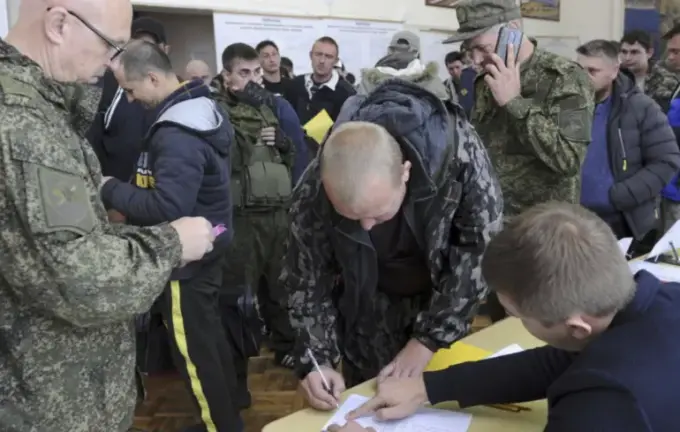Mass Mobilization in Occupied Donbas: A Tragedy Scheduled by Russian Strategies

On the temporarily occupied territories of Donbas, Russian military forces have employed harsh methods of forced conscription to reinforce their armed units.
According to Ukrainian intelligence, nearly 100,000 residents of Donbas have been forcibly enlisted into the Russian army.
These figures include not only those who volunteered to serve since 2014 but also residents driven by fear and coercion.
Military analyst and journalist Yevhen Shibakov discusses the scale of this tragedy in his research article “Broken Souls: What the Russian World Brought to Donbas.” He describes two main groups of mobilized personnel: the 1st Army Corps in Donetsk Oblast and the 2nd in Luhansk, both integrated into the Russian 8th Army of the Southern Military District.
Civilians from the region have been recruited into separate battalions that are ready to be thrown into the front lines at a moment’s notice.
According to recent estimates, losses of these units reach approximately 40,000 individuals, including killed, missing, and severely wounded soldiers.
Local residents, mobilized in the first wave, receive significantly fewer social guarantees compared to Russian military personnel, making recruitment even more attractive.
Payments for severe injuries or death also remain insufficient.
After Russia declared these regions “its own,” salaries of soldiers began to gradually align with Russian standards, yet incomes remain low — ranging from 20,000 to 56,000 rubles plus combat bonuses, totaling up to 100,000-384,000 rubles.
Such financial incentives have become the sole source of income for local populations, as the war and occupation have devastated the region’s economy, especially its mines.
Before 2014, the region hosted 114 mines; now only 15 remain operational.
This drastic decline led to soaring unemployment and an increase in shadow economy activities, including illicit coal mining.
Residents of the occupied territories face hardships such as water shortages, rising prices, and declining living standards.
Many believe that the occupation authorities only care about strategic points—cities along railways connecting Russia to Crimea and controlling key logistics routes—such as Volnovakha, Mariupol, Skadovsk, Luhansk, Berdyansk—whose control is crucial for the occupying forces.

